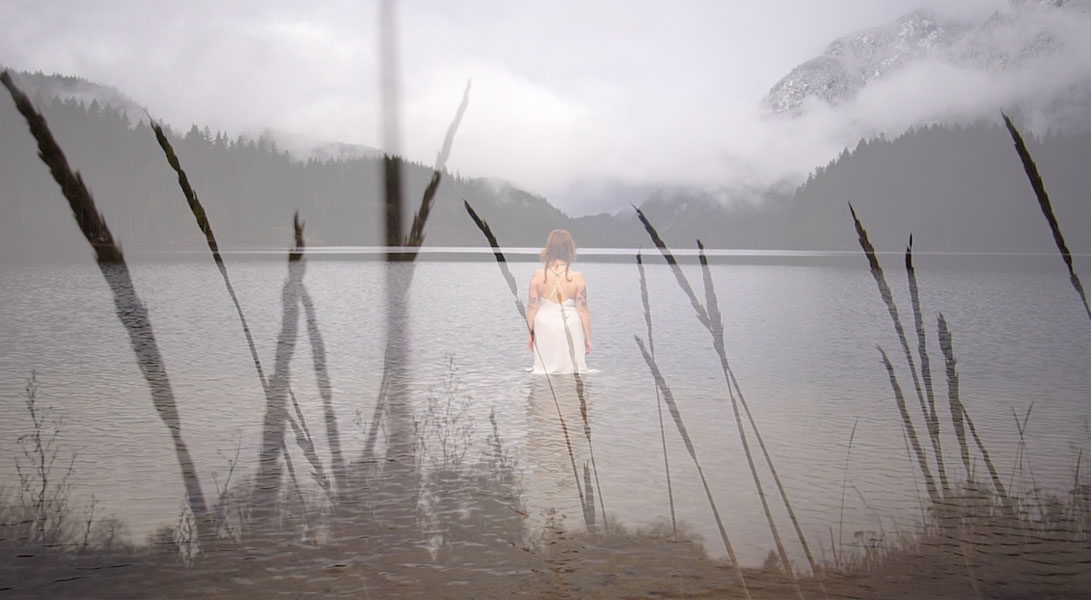Response: Our Land Narrative
APRIL 7 — 17, VIDEO SCREENINGS; MARCH 10 — 21, INSTALLATION-BASED WORKS
Response: Our Land Narrative is the culmination of the Response program, a new multi-year collaboration between The Polygon Gallery and First Nations Student Services and the Indigenous Digital Filmmaking Program at Capilano University. Participants engaged in a series of workshops led by Indigenous artists and Knowledge Keepers during Fall 2020. Inspired by the image of spreading branches and root systems, participants were invited to think carefully about and interpret where we are located, and how these places fundamentally shape our ways of knowing and who we are.
The work produced by participants will be on view over the course of two presentations. The first presentation, on display from March 10-21, features installation-based works using a range of media including photography, video, sculpture, drawing and audio. This will be followed with screenings of video works from April 7-17. The projects activate stories and conversations about connection, resistance, and migration, often through experimental approaches.
Response video screenings end at 3:00pm on Wednesday, Friday, Saturday, and Sunday.
Thinking through ways of being that recognise land as Knowledge Keeper, these works consider humanity in relation to lands and waters in various ways, and highlight shifts that take place over time both within and around us. Our Land Narrative asks: how do we affect nature, from our positions of being situated or unsettled, and what is its impact upon us, from our experiences with displacement and return?
The themes in Response will be developed further in a series of online public programs.
Participating Artists in March presentation
Olivia Marie Golosky (Métis – McMurray Métis Local 1935) is a filmmaker whose single-channel video is a meditation on the reclamation of self and the capacity to heal through reconnection to the land. They are a first year student in the Indigenous Digital Film Program at Capilano University.
Esteban Pérez (Ecuador) is a visual artist whose sound and drawing installation incorporates field recordings of the Earth and red cedar pigment, and proposes alternate ways of perceiving nature in an attempt to unsettle colonialist assumptions. He is a second year MFA student at Emily Carr University of Art + Design.
Aaron Dominic Oronhiawente Rice (Kahnawà:ke Mohawk Nation) is a visual artist whose installation evokes a firepit and invites viewers to gather and consider our relationship with land as medicine. He is a first year student at Emily Carr University of Art + Design.
Amy Romer (United Kingdom) incorporates photography, video and text within her installation to document Sen̓áḵw, part of the unceded territory of the Sḵwx̱wú7mesh, from a settler perspective. Romer is a documentary photographer and National Geographic Explorer.
Participating Artists in April presentation
Colton Cardinal (Saddle Lake Creek Nation) is a filmmaker whose video proposes patterns found in nature are repeated in the human environment. He is a first year student in the Indigenous Digital Film Program at Capilano University.
Nathan Chizen-Velasco (Canadian) is a visual artist whose work considers how land is directly and indirectly present in artworks, as the site of creation and circulation. He is currently enrolled in Cinema Studies at New York University.
Lia Rosemary Skiljaadee Hart (Haida-Canadian) reflects upon progress made by water defenders around the world through an urgent call for change in defense of Canadian waterways. She is currently a teacher candidate in UBC’s Indigenous Teacher Education Program.
Liam McAlduff (Secwépemc Nation) is a filmmaker whose video of a stream near his home in North Vancouver becomes a meditation on the turning of seasons and the beauty of nature. He is a first year student in the Indigenous Digital Film Program at Capilano University.
Natasha Nystrom (Metis Nation of B.C.) is an emerging artist whose piece documents her embodied experience in response to her heightened sense of awareness through the process of slowing down and sitting on the land in Secwépemc Territory. Nystrom uses photography, drawing, and collage in her practice.
Ash Simpson (Secwépemc Nation, Splatsín) is a filmmaker whose piece is inspired by childhood memories of their connection to the Okanagan Valley. They are a second year student in the Indigenous Digital Film Program at Capilano University.
Veronica Trujillo (Mexican) reflects upon the cycle of life in her video that documents the end of a journey on the Cheakumus River. She is a visual artist who was born in Mexico City, and currently lives and works in Squamish.
Sarah Danruo Wang 王丹若 (Chinese-Canadian) presents an experimental video combining film footage with maps to examine the (in)stability of land in a consideration of migration and connection across generations. She is an arts and culture worker whose recent projects focus on advocacy, curation, and gallery interpretation.

Presented By

Generously supported by
Metro Vancouver’s Regional Cultural Project Grants Program
Images (top to bottom): Veronica Trujillo, still from The Journey, 2020. Olivia Golosky, still from homecoming, 2021